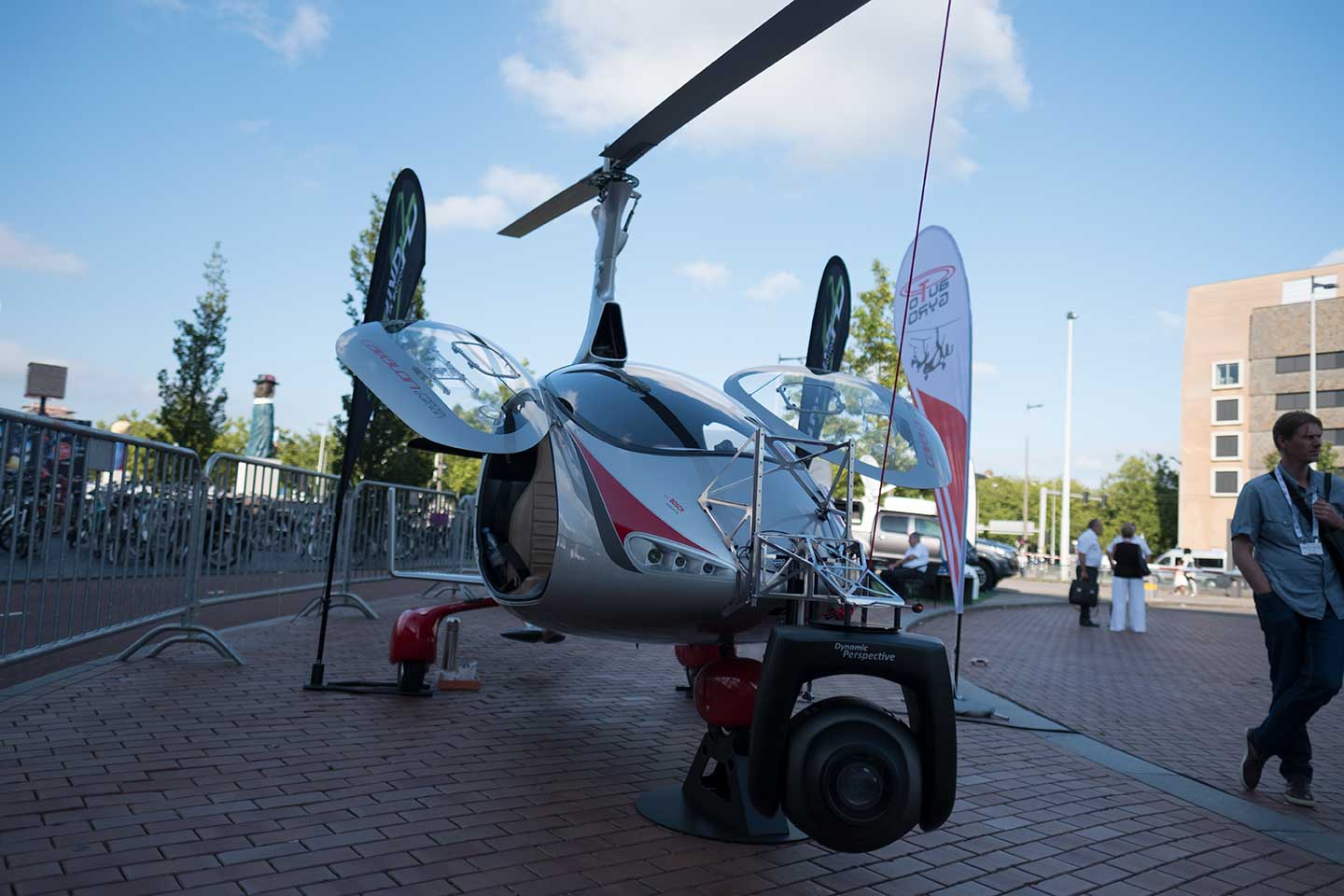
Gyros become UAV competitor
Posted on Jan 3, 2017 by Julian Mitchell
The DynaX5 Pro is a lightweight enough gimbal that attaches to the Cavalon Pro and lowers for full 360˚.
If you put an engine the size of the one in the smallest specced Ford Fiesta in to an aircraft with non-powered rotors you have the latest in aerial cinematography
If you know your aircraft history, you’ll know that autogyros were invented by a Spaniard in the 1920s and flourished to the point of being able to carry over 30 people. The inventor’s death in a gyro crash and the oncoming impact of helicopters put this particular aerial invention on the back burner. But ironically it maybe the cost of helicopters, especially for aerial filming, that has brought back the gyro to shoot for broadcast and film.
Keith Harding from BeyondHD, 25 years a TV and film cameraman, has been planning for aerials with a gyro for a couple of years but has been held back by CAA classification, “The CAA regulations for gyros are very similar to fixed wing, but because it’s been a new aircraft the CAA had to get to grips with the fact that it actually looked like a helicopter and flew like a fixed wing. In the end they classified it as a rotary wing aircraft, so like a helicopter but with the understanding that it actually performs like an aircraft in many of its aerodynamic ways.
BeyondHD now have their own autogyro, a Cavalon Pro, about £40,000 worth. The only gimbal they could find light enough and good enough was the DynaX5 Pro from Dynamic Perspective. It’s a two seater with power to the prop but not to the rotors (a trick that the crew does is to cut the engine power and rely on the rotors to spin with the force of the air!). Keith described the Cavalon Pro, “It has a small petrol engine and a Rotax 914 F (115bhp, four cylinder with turbo charger); because the top rotors aren’t powered and you usually need an enormous amount of power to move those around, we have a little bit of power on the back to give us forward momentum. So compared to a helicopter they’re very quiet, bearing in mind that at the heights we fly at we’re less perceptibly noisy or interfering than even a drone would even be. So you’ve got drones that go up to 400 feet and then there is 200 feet of clearance and we start at 600 feet just like any fixed wing or helicopter would. So we fly in the same space as a single engine helicopter would. At 600 feet the benefit is that we can put a 300x zoom in there so we can use the stability and stabilisation that we’ve got to make up the difference in the distance. We can still get up close and personal but we don’t have to. Super for wildlife, great for sport.”
 The Cavalon Pro gyro has an 80l tank which gives around two and a half hours of flight while fully loaded.
The Cavalon Pro gyro has an 80l tank which gives around two and a half hours of flight while fully loaded.
The gyro runs on unleaded fuel and has an 80l tank which gives it around two and a half hours fully loaded with the gimbal, operator, pilot and a fully loaded camera system on board.
“The burn rate of this aircraft is about 23l of petrol an hour and it uses unleaded fuel so the savings over a helicopter are very substantial. We’ve got an 80l tank and we typically find that at 60l we have our two-hour flight time.
“On a live broadcast we would be transmitted down to the ground using an HD transmitter link but actually we’d probably be doing exactly the same process if we were doing a drama or documentary. So we would use the link as the feed down to the video village so the director and DoP can see exactly what’s going on and talk to us in the air so they can direct us from the ground rather than being in the back of a helicopter.
“The second operational cost advantage is that the aircraft costs a lot less than a helicopter. The gimbal by Dynamic Perspective we’ve selected is not only is light enough to go on the aircraft but is somewhere close to half the price of the other mainstream equivalents like Cineflex.
“Weight is obviously very important but we couldn’t sacrifice quality and stability just because of weight. We’re happy to report that this is performing fantastically for us and we have no desire to try finding something else because it’s doing everything we want at a great price and weight performance.
“Things that make it operationally effective are the much lower cost to buy – the cost of ownership is just a fraction of that of a helicopter because it’s a very simple aerodynamic design and you’ve got a simple piston engine in the back which any aircraft engineer who is used to fixed wings and microlights can potentially fix. Other than that it’s all linkages, there’s nothing terribly clever about it which makes it very simple. Really the mechanical conceptual design hasn’t changed from the original one in the 1920s, they just look prettier!”
The CAA certification also took a while because the mount also had to be certified, they couldn’t use an existing helicopter mount as it was too heavy. “We’ve designed the mount and it has been built by the factory in Germany who build the aircraft. The big benefit is we can hydraulically lower the gimbal after take-off which means we get a full 360˚ view underneath the aircraft so we can do pull-aways and those kind of things.”













